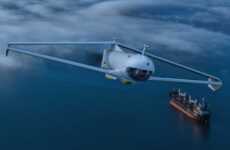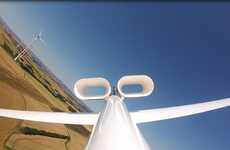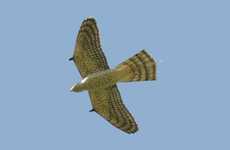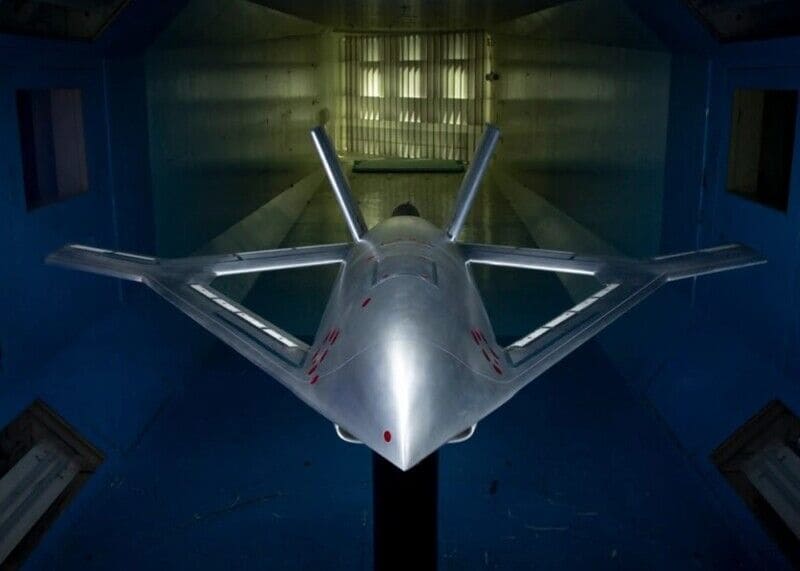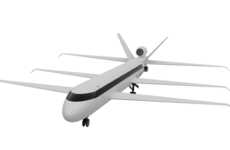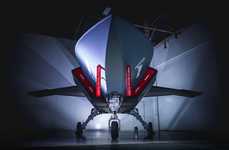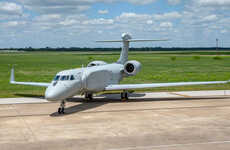
DARPA's CRANE Program Seeks to Create a Plane Without a Mechanical Control
Colin Smith — January 21, 2023 — Autos
References: aurora.aero & newatlas
DARPA's CRANE program, which stands for the Control of Revolutionary Aircraft with Novel Effectors program, aims to eliminate the need for traditional moving flight controls on the exterior of the wings and tail. The company recently awarded Aurora Flight Sciences a phase 2 contract for this program. The program will reduce the weight and mechanical complexity of traditional control surfaces, improve overall performance, and enable higher angles of attack.
The aircraft will use Active Flow Control (AFC) to fly, which uses a series of nozzle arrays along the wings connected to a pressurized air system. These nozzle arrays can blow controlled bursts of air to directly modify the air pressure and flow around the aircraft, effectively creating virtual control surfaces out of compressed air. Aurora Flight Sciences is currently in the process of building a full-scale unmanned AFC test plane with a 30-foot wingspan and the capability to fly at speeds up to Mach 0.7. If the program moves forward with phase 3, the aircraft will be completed and in-flight testing by 2025. This new technology has the potential to change the way aircraft are designed and built in the future.
Image Credit: Aurora Flight Sciences
The aircraft will use Active Flow Control (AFC) to fly, which uses a series of nozzle arrays along the wings connected to a pressurized air system. These nozzle arrays can blow controlled bursts of air to directly modify the air pressure and flow around the aircraft, effectively creating virtual control surfaces out of compressed air. Aurora Flight Sciences is currently in the process of building a full-scale unmanned AFC test plane with a 30-foot wingspan and the capability to fly at speeds up to Mach 0.7. If the program moves forward with phase 3, the aircraft will be completed and in-flight testing by 2025. This new technology has the potential to change the way aircraft are designed and built in the future.
Image Credit: Aurora Flight Sciences
Trend Themes
1. Active Flow Control Technology - The use of AFC technology can create virtual control surfaces and replace traditional mechanical control surfaces, reducing weight and improving performance of aircraft.
2. Nozzle Arrays - The use of nozzle arrays for AFC technology in aircraft design has the potential to revolutionize the aerospace industry, by improving overall performance while reducing mechanical complexity and weight.
3. Unmanned Aircraft - The development of unmanned aircraft with AFC technology can be applied in various fields such as surveillance, delivery and transportation, with the potential for reducing costs and increasing efficiency.
Industry Implications
1. Aerospace - The aerospace industry can apply AFC technology to design and build aircraft that are lighter, more efficient, and offer improved performance.
2. Defense - The defense industry can leverage AFC technology to develop unmanned aerial vehicles that can be used for reconnaissance and surveillance missions, while reducing the risk of human casualties.
3. Transportation - The transportation industry can use unmanned aircraft with AFC technology for delivery and transportation of goods and services, potentially reducing costs and increasing efficiency.
5.1
Score
Popularity
Activity
Freshness

